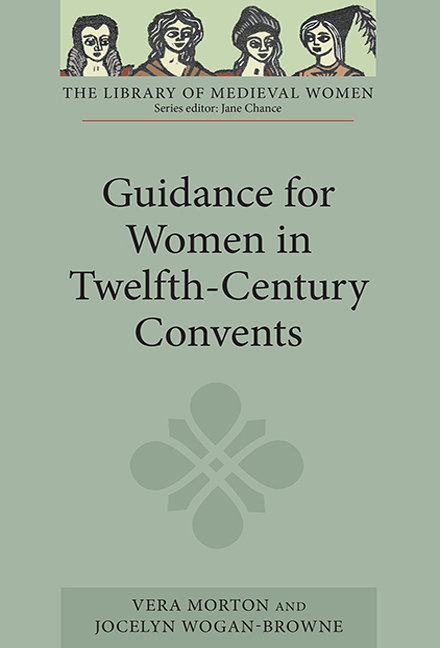Book contents
- Frontmatter
- Contents
- Preface
- Acknowledgements
- Abbreviations
- Introduction
- Note on Texts and Translations
- I Osbert of Clare, Prior of Westminster, to Adelidis, Abbess of Barking: A Thank-You Letter on Holy Widows, Virgin Fecundity and Precedents for Female Authority (Letter 42)
- II Abelard to Heloise: The History of Women's Roles in Christianity (Letter 7)
- III Peter the Venerable to his Nieces Margaret and Pontia: Of Nieces and Grandmothers and the Virgin Life at Marcigny (Letter 185)
- IV Osbert of Clare to his Nieces Margaret and Cecilia in Barking Abbey: Heavenly Rewards for Virgins in Barking (Letters 21 and 22)
- V Abelard to Heloise: On Educating Virgins (Letter 9)
- VI Goscelin of St Bertin: Lives of the Abbesses at Barking (Extracts)
- Interpretive Essay
- Bibliography
- Index
- Index
- Miscellaneous Endmatter
Introduction
Published online by Cambridge University Press: 29 April 2017
- Frontmatter
- Contents
- Preface
- Acknowledgements
- Abbreviations
- Introduction
- Note on Texts and Translations
- I Osbert of Clare, Prior of Westminster, to Adelidis, Abbess of Barking: A Thank-You Letter on Holy Widows, Virgin Fecundity and Precedents for Female Authority (Letter 42)
- II Abelard to Heloise: The History of Women's Roles in Christianity (Letter 7)
- III Peter the Venerable to his Nieces Margaret and Pontia: Of Nieces and Grandmothers and the Virgin Life at Marcigny (Letter 185)
- IV Osbert of Clare to his Nieces Margaret and Cecilia in Barking Abbey: Heavenly Rewards for Virgins in Barking (Letters 21 and 22)
- V Abelard to Heloise: On Educating Virgins (Letter 9)
- VI Goscelin of St Bertin: Lives of the Abbesses at Barking (Extracts)
- Interpretive Essay
- Bibliography
- Index
- Index
- Miscellaneous Endmatter
Summary
Medieval letters on virginity and chastity
Even when addressed to a single individual, and to someone personally known to the writer, medieval literary letters were designed for copying and circulation among a wider public. Some of them are in effect treatises in epistolary form, meant not only to address particular people, but to be exemplary and useful to further audiences. The correspondence of churchmen was often copied into model collections. Handbooks in the art of composition, the ars dictandi, taught the conventions for composing letters (the physical writing of letters was frequently done by secretaries working to dictation) and provided model examples. The twelfth century witnessed a great flowering of letters as literature and of letter collections. The correspondence of churchmen and women in the eleventh and early twelfth centuries often took the form of elaborate Latin verse love-letters in a particular development of the traditions of spiritual friendship more widely used between men in the monastic life. While few women are known personally to have composed Latin letters after the twelfth century, current research suggests that there are more women Latin letter writers than has been thought. (Elite women could of course command their clerks to write letters for them, whether for business and administrative concerns such as the management of their estates, or for more personal or literary letters).
Twelfth-century churchmen writing to women under their pastoral care or spiritual direction drew on a substantial literature of virginity and chastity from the early Christian centuries, as does Abelard in his letter to Heloise on the teaching and learning of nuns (see V below) and Peter the Venerable in his letter to his nieces (III below). The Fathers of the early Church, such as Cyprian, Tertullian, Ambrose, Augustine and above all Jerome, wrote letters and rules for women living religious lives in which an ideal of virginity and chastity as a difficult and superior spiritual state is articulated. Unmarried women could be consecrated to God as virgins and women who had been married could at least be his chaste if not virgin servants. By renouncing marriage and childbirth in order to undertake a life of vowed chastity or virginity in these ways, women could become more nearly like men, more virile (the Latin for ‘man’ is vir). At the same time, they could lead a modest and decorous life as women, veiled and enclosed.
- Type
- Chapter
- Information
- Guidance for Women in Twelfth-Century Convents , pp. 1 - 12Publisher: Boydell & BrewerPrint publication year: 2003



